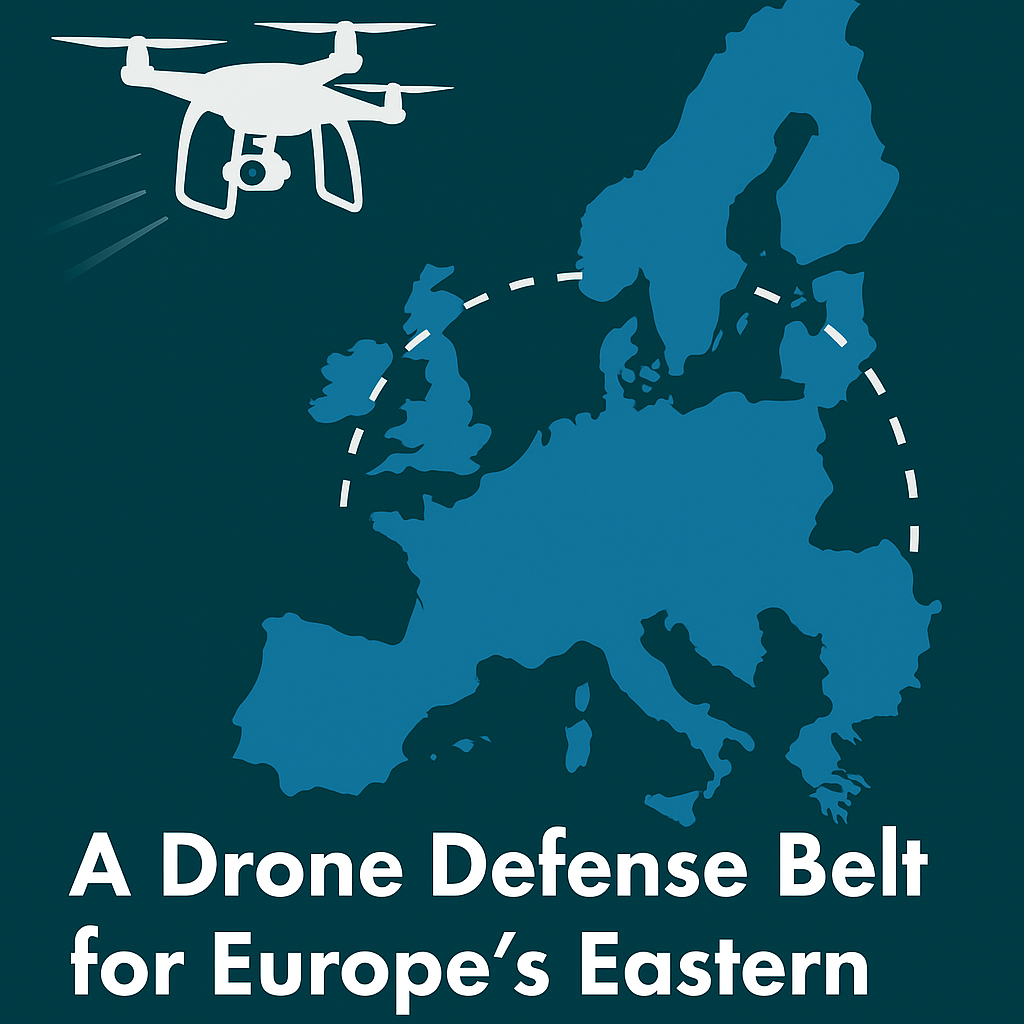A Drone Defense Belt for Europe’s Eastern Flank
Why we don’t have decades to wait – and how a cost-effective solution could look
Europe is still debating billion-euro packages for high-tech defense, while Russian drones are already crossing NATO borders. Poland, Lithuania, Romania – all are in the spotlight. The threat is real, and it’s cheap: an Iranian Shahed drone costs only tens of thousands of euros. Yet our defense systems still rely on weapons that cost millions – or fighter jets firing missiles worth a family house at a flying moped.
That’s not sustainable. And it’s not effective.
Why a drone defense belt is essential
Drones are no longer a niche problem – they are the weapon of choice in hybrid warfare. They can:
- Hit energy facilities, depots, bridges.
- Disrupt troop movements.
- Intimidate civilian populations.
Ukraine demonstrates every day how dangerous and numerous drones can be. Europe watches, instead of learning from this “laboratory of war.”
Effective protection cannot rely only on Patriots, F-35s, or billion-euro missiles. We need a second net: a continuous, overlapping low-tech defense belt along NATO’s eastern border.
What such a belt could look like
1. Overlapping defense cells
- Every 10–15 km one defense point.
- Sensors (radar, acoustic, IR cameras) → detect drones.
- Soft-kill (jammers, GPS disruption) → first line of defense.
- Hard-kill (flak, FPV interceptor drones, mobile cannons) → only if necessary.
- Every drone is detected and engaged in at least two defense bubbles simultaneously.
2. Layered approach
- Low-tech systems for drones costing €5,000–€50,000.
- Medium-range systems (IRIS-T, NASAMS) for cruise missiles.
- High-end (Patriot, SAMP/T) for ballistic threats.
→ This ends the “shooting sparrows with cannons” problem.
3. Mobile teams
- Pickups with jammers, net-drones, FPV interceptors.
- Fast-moving, cheap, and effective against swarms.
- Complement the stationary cells.
4. Evidence & communication
- Each defense cell stores data (radar, video, GPS wreckage).
- Every border violation can be documented.
- This exposes Russian “accident” narratives.
Why hasn’t this been done already?
- Bureaucracy: procurement takes years.
- Industry lobby: money flows into high-end projects.
- Mindset: low-tech is seen as “too simple,” even though it works.
- Politics: fear of provoking Moscow – so silence is preferred.
But every downed power line, every sabotaged cable or pipeline proves: we don’t have time.
Who could start right now?
- Poland, Lithuania, Romania: could independently build first defense belts – pilot projects.
- Border municipalities: local protection for critical infrastructure (power, water, rail).
- Private defense firms & startups: low-tech counter-drone systems are a market waiting to scale.
- EU/NATO programs: could release funds faster – but need pressure from below.
Who this article is for
- For politicians who believe there’s time until 2035.
- For military experts stuck in the high-tech tunnel.
- For media and citizens, who must understand: security isn’t just billion-euro projects, but also pragmatic solutions.
- And for those who want to act now – even if the “big players” are still asleep.
Conclusion: Protection can’t wait decades
Putin tests our defenses every day. Every drone left unanswered strengthens his calculus.
A drone defense belt along NATO’s eastern flank is feasible, affordable, and necessary – now, not in 2035.
We must show: Europe’s borders are not just political lines, but real protective spaces. Whoever violates them meets resistance – whether with jets, cruise missiles, or drones.
It is in our hands whether we secure the skies above Europe – or keep waiting until it’s too late.



